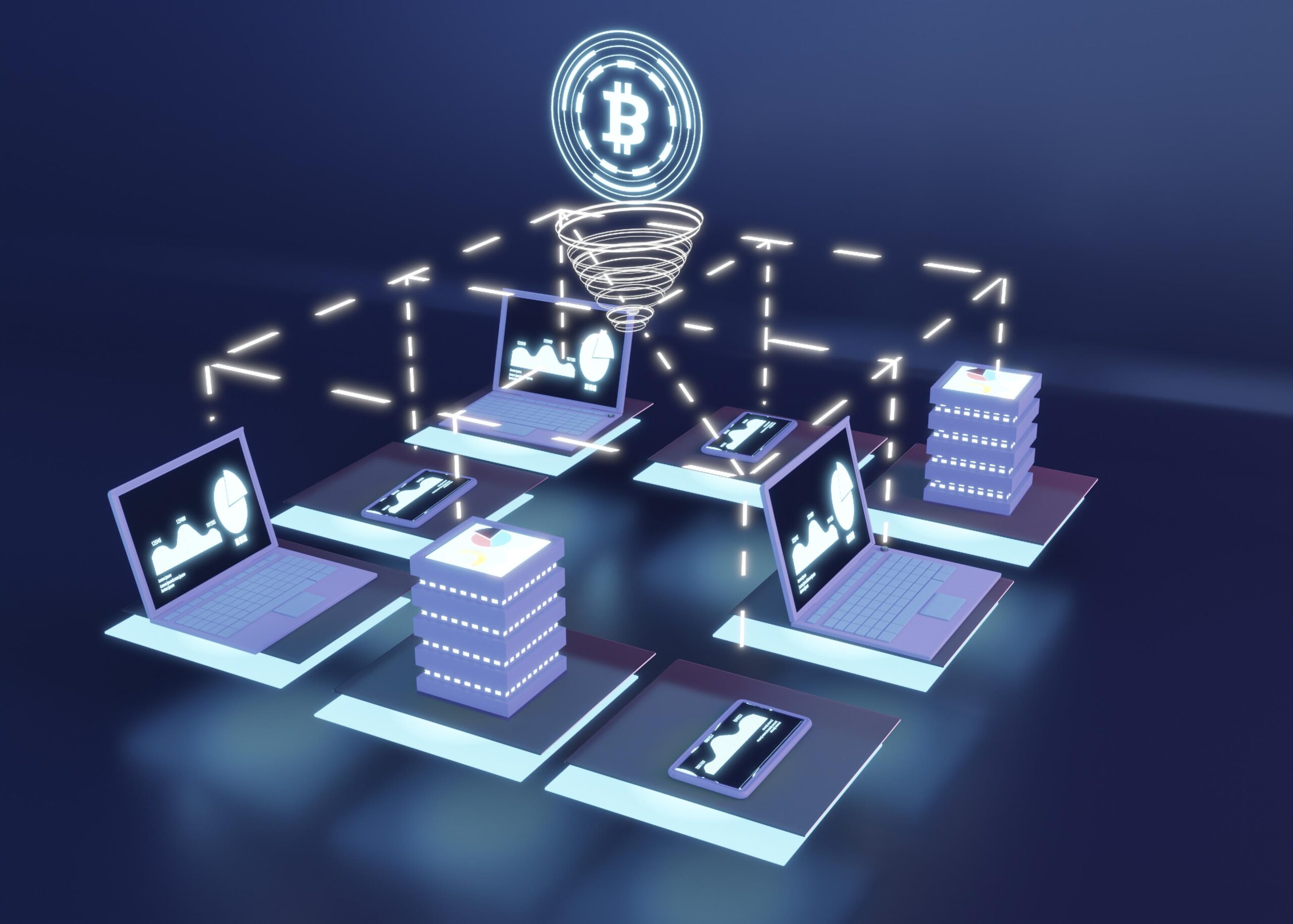Blockchain 101 technology is considered one of the most disruptive innovations of the modern era. Just like every other technology has its growth myths, blockchain also has myths surrounding it that have posed challenges for users, businesses, and developers.

Such myths are detrimental to the adoption blockchain has achieved so far. In the case of digital assets that change at breakneck speed, misconceptions regarding the technology often hinder progress and obscure the actual capabilities of blockchain.
Can blockchain transactions really be anonymous? Is blockchain able to scale for global transaction processing? Is blockchain only relevant for cryptocurrency? These are just some misunderstandings confined within the Blockchain technology ecosystem that lacks clarity surrounding it.
If you are someone who has avoided diving into blockchain technology and is bewildered by the frequent discussions, you are not the only one. Myths regarding the technology only add to the confusion which can potentially be overwhelming.
So now these misunderstandings can come to an end. This blog aims to unpack the 5 most popular misconceptions surrounding blockchain technology so the users can navigate the blockchain ecosystem knowledgeably.
So let’s reveal the potential for revolution dominion beyond cryptocurrency industries.
The Top 5 Myths About Blockchain—Debunked
The rise of blockchain based digital currencies, decentralized applications, and smart contracts has intensified in the past few years.
Despite its innovative nature, there are still many misconceptions spread around blockchain. Let’s take a look at the top myths regarding blockchain and try to debunk them.
Myth #1: Blockchain Is Only Useful for Cryptocurrencies
Perhaps the most famous misconception is the claim that blockchain only aids in the transaction of Bitcoin and Ethereum. Undoubtedly, supporting cryptocurrency transactions was blockchain’s initial purpose, however, it does not end there.
Fact: Blockchain technology is a type of technology with a decentralized, distributed ledger used to store and transfer any type of data securely. Its potential extends even further into healthcare, supply chain management, finance, real estate, and even voting systems. Blockchain is more than just a crypto.

The leeway blockchain technologies offer along with their unchangeability and transparency make them a powerful management technology for many digital assets, not only cryptocurrencies.
Decentralized Finance (DeFi) platforms, for example, demonstrate the potential of blockchain technology to transform the traditional financial system. Without the use of third-party banks, individuals can lend, borrow, and trade assets with one another because of the blockchain’s decentralized system.
Due to its capacity to provide transparency, limit fraudulent activities, and simplify processes, blockchain technology is an efficient remedy for many industries. It can be used in tracking the source of goods, keeping medical data securely, and other numerous applications outside of cryptocurrencies.
Myth #2: Transactions done on the blockchain are anonymous and cannot be tracked.
A common misconception about blockchain is that transactions conducted on a blockchain network remain anonymous and impossible to trace.
This misconception can be largely attributed to the early practices that came with Bitcoin where users were allowed to make transactions under pseudonyms. Contrary to popular belief, however, blockchain is not as anonymous as one might think.
Fact: Blockchain transactions are pseudonymous, not anonymous. Each transaction is inscribed on a public ledger that can be accessed by anyone with the skills to decipher it. For Bitcoin, users are represented by a wallet address, however, this address is not connected to a person’s name unless there is some identity forensics that can be used to link them.
In addition, the open nature of blockchain facilitates greater responsibility. On public blockchains, researchers and investigators can monitor the movement of funds and even the movement of money for illegal purposes within the blockchain. Digital forensics experts can analyze various transactions and reveal the people behind questionable transactions.
Even though blockchain maintains more privacy than the conventional financial systems, it is not an anonymous system.
The truth is that blockchain technology can, because of its transparent and unchangeable features, improve the effectiveness of regulatory compliance as well as anti money laundering tasks.
Myth #3: Blockchain Is Insecure and Easily Hacked
Some people tend to think that a new technological advance equals an insecure and a hackable system, especially for those unfamiliar with the work behind the technology.
Fact: Storing and transmitting data using blockchain is one of the most secure systems. Every single transaction in a blockchain is fully encrypted, while a consensus protocol protects the entire network. It does not matter whether it is proof of stake or proof of work, blockchain invariably employs mathematical calculations to verify and protect the integrity and security of an individual block.
Its decentralization is what makes blockchain secure. Unlike traditional systems that are built around a single point of failure, blockchain networks consist of many nodes (computers) that validate and verify transactions, which are then distributed across the network. Because of this infrastructure, the chances of hacking blockchain technology is significantly reduced.
For example, in Bitcoin’s proof of work system, the participants (miners) must solve complex mathematical problems in order to validate transactions. The large amount of computational power that would need to be consumed to add fraudulent transactions makes hacking the system impractical, if not impossible.
Although no system can be called completely secure, blockchain technology offers robust security and coupled with ongoing smart contract audits, makes it one of the safest technologies available for data management and transactions.
Myth #4: Blockchain Is Too Complex for Everyday Use
Another myth related to blockchain technology discusses its complexity for an ordinary person. The specialized jargon associated with the technology is what leads people to think that blockchain is complicated to interact with at any level.
Fact: The complexity of blockchain technology does not impede its practical applications, which are becoming increasingly more user-optimized. Developers of blockchain’s applications, wallets, and platforms structure them around the ease of use so that users can effectively interface with the technology without needing to understand how it functions on a deeper level.
The use of cryptocurrency exchanges like Coinbase or Binance serves as an illustrative example for the buying and selling of Bitcoin as they provide effortless experiences for the users.
Ethereum allows developers to build DApps at ease and provides the necessary frameworks aimed at easing the interaction with DApps.
Further, DeFi services are adding value to blockchain-based financial products by enabling easier access to advanced financial services through decentralized systems, thus eliminating the use of intermediaries. As technology evolves, sophisticated services will be made easier to use by a wider population.
Myth #5: Blockchain Is Not Scalable
There is an ongoing debate regarding the idea that transactional blockchain technology is slow and inefficient when dealing with large volumes of transactions, particularly in comparison to traditional financial systems Visa or Mastercard.
Claim: Traditional scalability remains an issue for blockchain technologies; nevertheless, it is certainly achievable. Various approaches are being developed for expanding new solutions and innovations. For example, the Bitcoin Lightning Network enables cheaper and faster transactions by processing payments off-chain and only finalizing the result on-chain.
The other major blockchain, Ethereum, is in the process of upgrading to Ethereum 2.0 which implements a proof of stake consensus replacing the energy consuming proof of work. This shift will improve scalability, further decreasing transaction costs and improving net gains across the Ethereum network.
Moreover, sidechains, sharding, and Layer-2 frameworks are in the process of being established in support of blockchain scalability to relieve secondary chains or networks of transaction burden.
These innovations will allow blockchains to sustain millions of transactions per second which will foster adoption in finance, supply chain infrastructure, and healthcare industries.
Wrapping Up
There is no doubt that blockchain technology is one of the greatest innovations of this century. Unfortunately, misconceptions surrounding blockchain technology tend to limit its adoption by businesses and individuals who stand to benefit from it.
By outlining the most common misconceptions, we aim to shed light on the actual potential blockchain has to offer across several sectors and industries.
As blockchain technology matures, its uses will only increase. It will become indispensable in decentralized systems, data transparency, and secure transaction-related functionalities.
The right blockchain education paired with robust understanding will allow individuals and organizations to enjoy the countless benefits of the technology in an ever evolving digital era.
FAQs
1. Does blockchain technology exclusively pertain to cryptocurrencies?
Not at all, blockchain technology is industry agnostic. It can be applied in many sectors including healthcare, supply chain management, and even finance.
2. Is hacking a possibility for blockchain technology?
No system is completely hack-proof, however, its decentralized nature coupled with security features makes blockchain the most secure technology in existence.
3. What level of transparency is provided using blockchain technology?
With blockchain technology, every transaction is recorded in a ledger which is publicly available. This guarantees that transactions are auditable in real-time.
4. Is blockchain difficult to use?
Blockchain platforms have become more accessible as everyday users can now navigate through more intuitive interfaces and tailored solutions.
5. Will blockchain ever be scalable for global transactions?
Indeed, blockchain is advancing alongside sidechains, Ethereum 2.0, and Bitcoin Lightning Network, which provide solutions to scalability issues for accommodating global transactional volumes.




